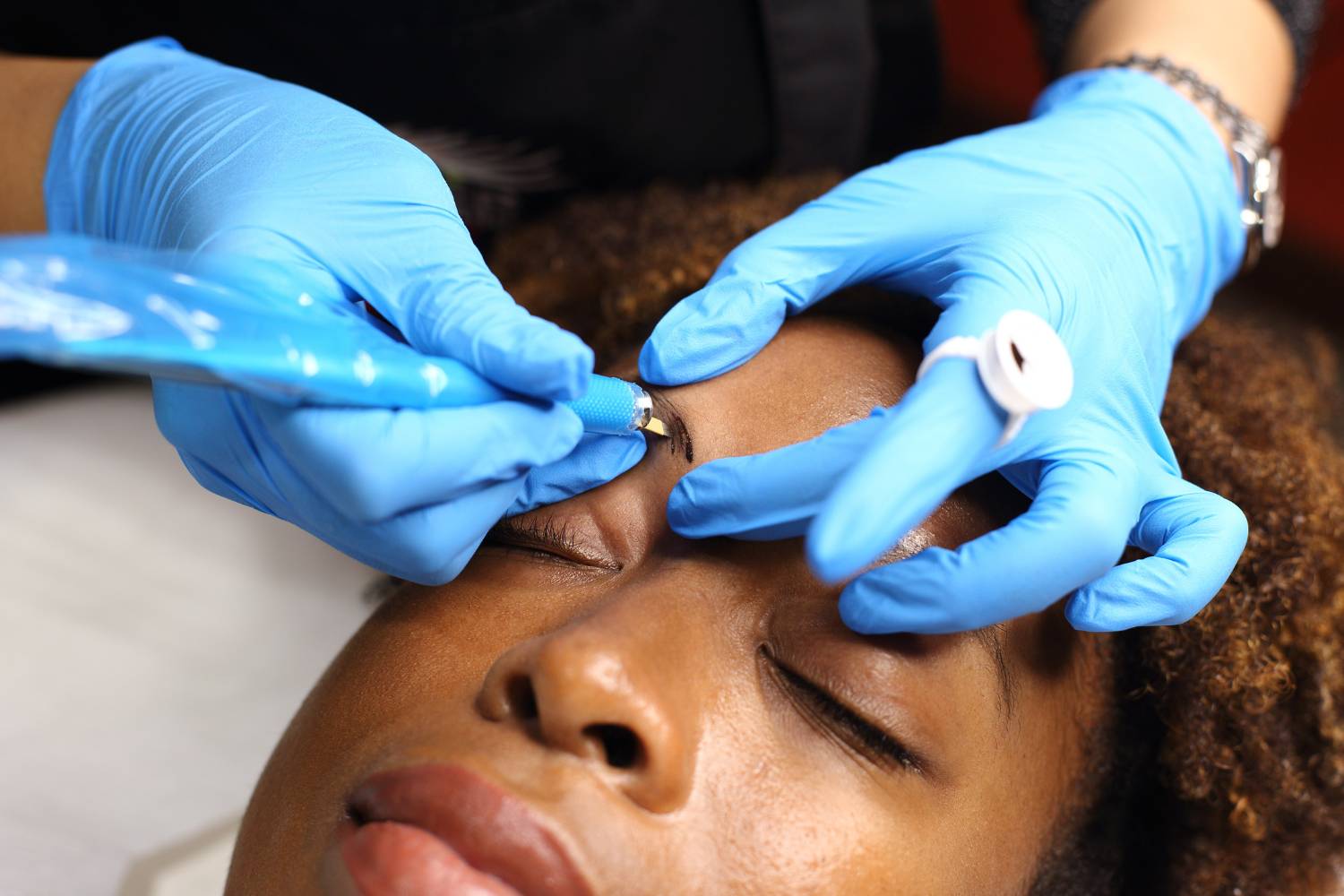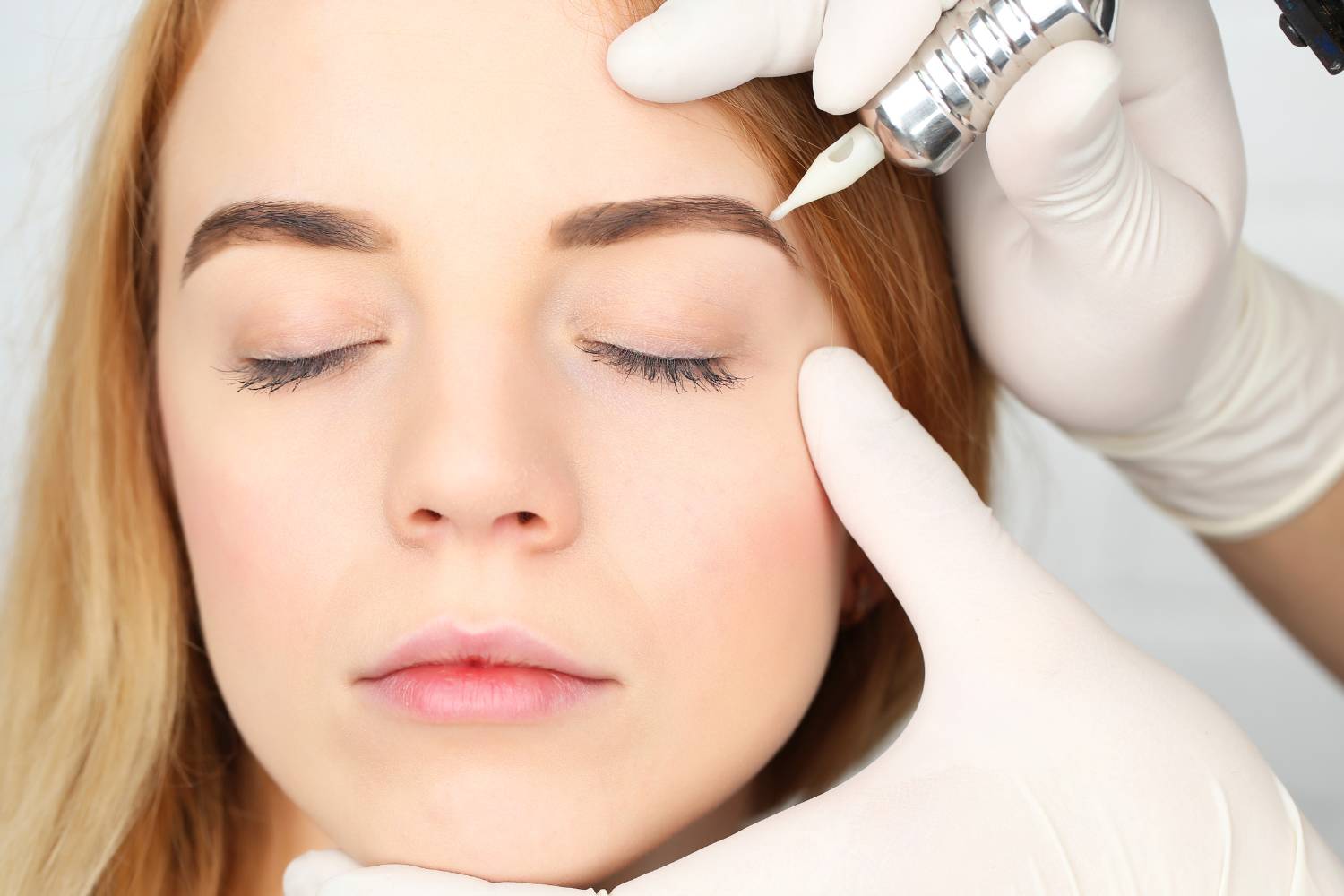Eyebrow microblading has become popular for achieving fuller, more defined brows without daily makeup. Whether enhancing sparse brows or reshaping your arches, a microblading touch-up provides additional colour and definition.
However, proper aftercare ensures the best results and long-lasting effects. This article will outline the key precautions after your eyebrow microblading touch-up.
Let’s get straight to the point.
After a microblading touch-up, follow these key precautions to ensure optimal healing and long-lasting results: avoid touching or scratching the area, keep the brows clean, avoid water exposure, and steer clear of makeup and skincare products for a week.
Protect your brows from sunlight, limit intense physical activity, and avoid picking or peeling scabs. Follow your technician’s aftercare instructions carefully, stay hydrated, and maintain a nutritious diet.
Be cautious with hair treatments, avoid hot environments, and protect your brows from environmental debris. If you consider a different technician for a future touch-up, clearly communicate your prior experience and preferences.
Key Precautions After A Microblading Touch-Up
1. Avoid Touching Or Scratching
Touching or scratching the treated area can disrupt the healing process and increase the risk of infection. Even though the brows may itch, could you resist the urge to touch them?
Scratching can dislodge the pigment, leading to patchy or uneven results. Touching the area with unclean hands introduces bacteria, increasing the risk of infections.
If itching becomes intolerable, consult your technician about applying a recommended ointment to soothe the skin without disturbing the healing process.
2. Maintain Cleanliness
Keeping the area clean is vital. Clean your eyebrows twice daily using a mild, fragrance-free cleanser and lukewarm water.
Gently remove any build-up of oil, sweat, or debris. Avoid harsh or abrasive cleansers that could irritate the area or disrupt healing.
After cleaning, pat the brows dry with a soft, clean towel—avoid rubbing or scrubbing. This practice prevents infections and supports optimal pigment retention.
3. Avoid Water Exposure
During the healing period, it is vital to avoid water exposure, including swimming, soaking in hot tubs, or taking long showers. Excessive sweating from intense exercise should also be avoided, as moisture can interfere with pigment retention.
Water exposure may cause the pigment to fade prematurely or become uneven, which affects the final result. Keeping the brows dry during the initial healing period ensures the pigment settles properly, delivering long-lasting and evenly pigmented eyebrows.
4. Avoid Makeup And Skincare Products
Avoid applying makeup, moisturisers, or skincare products around the brow area for at least a week after your touch-up. These products can irritate the skin and introduce bacteria, potentially leading to infection or compromised healing.
You ensure the eyebrows achieve the best possible results by allowing them to heal naturally without interference.
5. Shield Brows From Sunlight
Direct sunlight can cause the pigment to fade prematurely. To protect your brows from UV exposure, wear sunglasses or a wide-brimmed hat outdoors.
Consider applying broad-spectrum sunscreen around the area (once fully healed) to protect the surrounding skin from harmful UV rays.
UV exposure can also lead to pigment discolouration. By shielding your brows from sunlight, you maintain the vibrancy and longevity of your microblading results.
6. Limit Physical Activity
Avoid intense physical activities that induce sweating or strain around the brow during healing. Excessive sweating can interfere with pigment retention, while activities that cause friction or rubbing against the treated area may result in irritation or pigment loss.
Opt for gentle exercises during this period to prevent complications.
7. Avoid Picking Or Peeling
As your brows heal, you may notice scabs or flakes forming. It’s essential not to pick or peel at these as this can disrupt the pigment implantation. Picking at scabs can lead to pigment loss, uneven healing, or infections.
Allow the scabs to shed naturally to ensure smooth, even healing.
8. Follow Aftercare Instructions
Your technician will provide specific aftercare instructions tailored to your needs. Follow these diligently, as they are designed to promote proper healing and optimise your microblading results.
Instructions may include applying a healing ointment or avoiding certain activities. Failing to adhere to these instructions may result in complications or poor healing.
9. Be Mindful Of Sleeping Positions
Avoid sleeping on your face during the healing period, as this can put pressure on the brows and interfere with healing. Sleeping on your back is preferable, and using a soft pillow for support can help minimise pressure on the brows.
This precaution helps maintain the integrity of the pigment and ensures even healing.
When To Schedule A Microblading Touch-Up?
A touch-up session is an essential part of the microblading process. Technicians usually recommend scheduling this appointment 4 to 6 weeks after the initial procedure.
During this period, the skin undergoes its initial healing process, and the pigment settles.
At your touch-up session, your technician will assess how well your eyebrows have healed and make any necessary adjustments.
These include filling areas where the pigment has faded or adding extra strokes to achieve your desired shape and density. Adhering to this timeline ensures you maintain the longevity and quality of your microbladed brows.
Touch-ups might also be necessary in the future as the pigment fades naturally. Depending on your needs, your technician can advise on how frequently you’ll need these sessions.
Can A Different Technician Perform A Microblading Touch-Up?
A different technician can perform your touch-up, but there are considerations to remember. Each technician may use different techniques, pigments, and styles.
The original technician is likely more familiar with your brows and can provide a more personalised touch-up based on their initial work. If you choose a new technician, communicate openly about your previous microblading experience.
Share details about when and where the procedure was done and any preferences or concerns you have. Research the new technician thoroughly and ensure they have experience performing touch-ups to achieve a seamless result.
Conclusion
Taking the right precautions after a microblading touch-up ensures optimal healing and long-lasting results. These include avoiding water exposure, makeup, strenuous activities, and following proper aftercare instructions.
Protecting your brows from sunlight and avoiding alcohol or blood-thinning medications will help preserve the pigment and maintain the appearance of your eyebrows.
By being patient and following the guidance of your microblading technician, you can enjoy beautiful, long-lasting eyebrows that enhance your overall look.
FAQs About Microblading
What Is Microblading?
Microblading is a semi-permanent cosmetic procedure that enhances eyebrow appearance by depositing pigment into the skin to create hair-like strokes, resulting in fuller and more defined brows.
How Long Does Microblading Last?
Microblading results typically last between 1 to 3 years, depending on factors like skin type, lifestyle, and aftercare practices.
Does Microblading Hurt?
Discomfort during microblading is minimal for most individuals and can be managed with topical numbing creams applied before the procedure.
Can Anyone Undergo Microblading?
While microblading is suitable for many people, individuals with certain skin conditions or those who are pregnant or breastfeeding may not be eligible. It’s essential to consult with a qualified technician to determine suitability.
How Do I Maintain My Microbladed Eyebrows?
Proper aftercare, including avoiding excessive sun exposure and following the technician’s instructions, is crucial for prolonging the longevity of microblading results. Additionally, touch-up appointments every 1 to 2 years help maintain eyebrow shape and colour.



